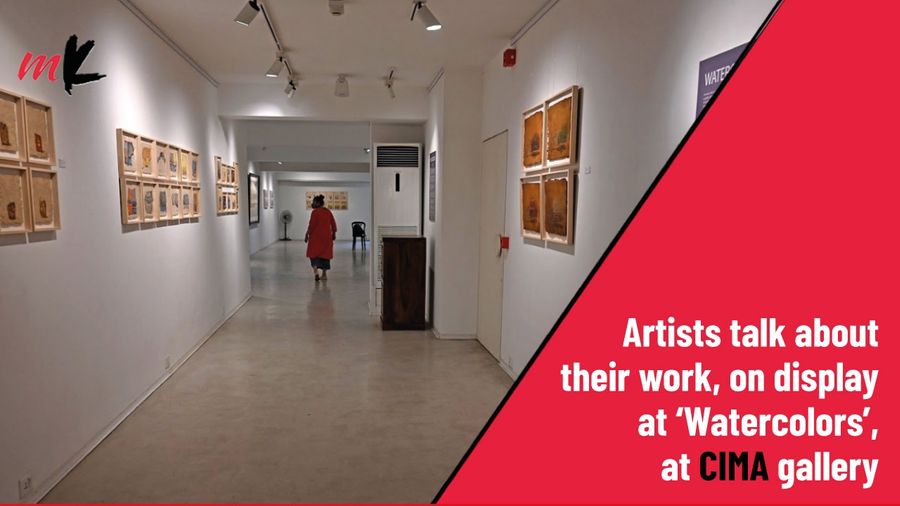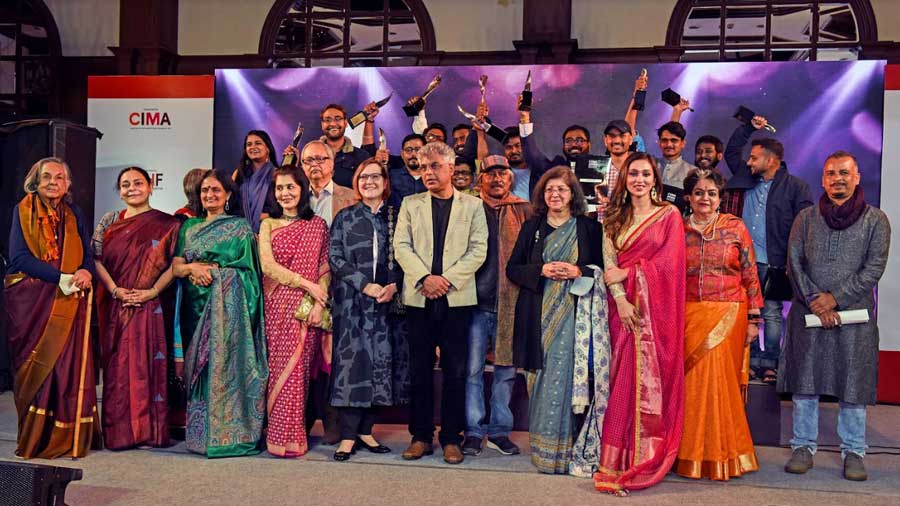The story of India after Independence can be traced through many different developments in many different fields and visual art is one of them. As India completes its 75th anniversary of Independence, CIMA Gallery’s current exhibition titled ‘Colours of Freedom: Art from Independent India’ attempts to reflect and assess the visual space shaped by 75 years of freedom.
Along with veteran and young Indian artists across generations, the exhibition includes excerpts from landmark films, featured textiles, indigenous subaltern art from post-Independent India. “The experience of the exhibition is meant to be holistic and a celebration of the creative diversity and freedom of this vast country,” said Rakhi Sarkar, director of CIMA.
Pather Panchali as the turning point
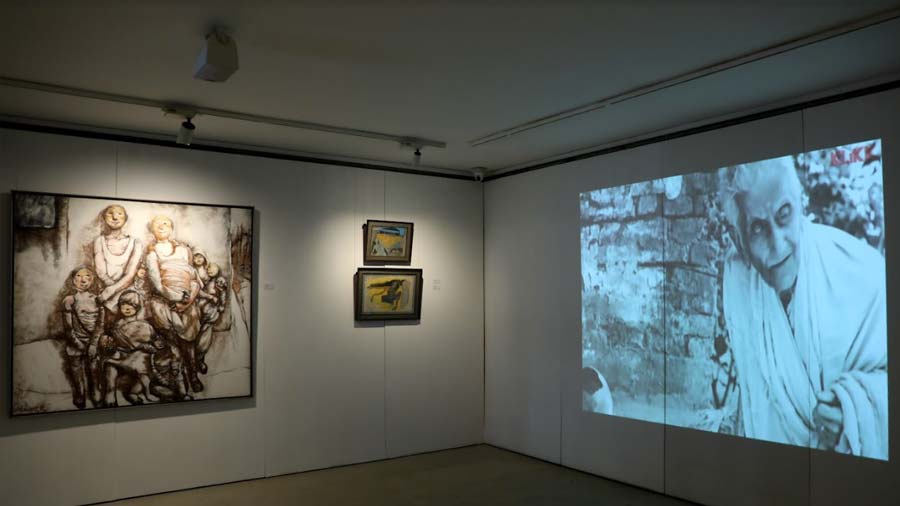
The exhibition begins with Bikash Bhattacharjee, Satyajit Ray and M. F. Husain Photos: Arijit Sen
The exhibition of works by 51 artists is laid out in a way that takes you through the visual art journey of post-Independent India with representation of art from each decade. It starts with cinematic clippings from Satyajit Ray’s Pather Panchali (1955) projected on a wall. On either side of it are paintings by Bikash Bhattacharjee and M.F. Husain’s take on Ray’s Apu, Durga and their aunt. “The clippings of Pather Panchali have been included as a homage to the director in his centennial year. Young Ray was greatly inspired by the neo-realist ideas of Italian filmmaking. It was all about showing the outdoors, in the midst of real life with relatively unknown actors coming from ordinary life,” said Sarkar.
The year 1955 was crucial because Ray inspired the entire cinematic, visual and theatre world of India. “Ray taught us to look differently at cinema and his cinematic experiments impacted the artistic and cultural nuances of India hugely,” said Sarkar.
Bikash Bhattacharjee has been included in the same section because he was, like Ray, inspired by the neo-realism of films like The Bicycle Thief by Vittorio De Sica. Bhattacharjee’s entire oeuvre was realism, but it was all about the hapless, the sex worker, the ordinary woman, the downtrodden and occasionally bordered on magic realism. Bhattacharjee’s painting on display here could very well be a depiction of the Rohingyas or the Ukrainians today.
Eclectic modernism from the 1950s
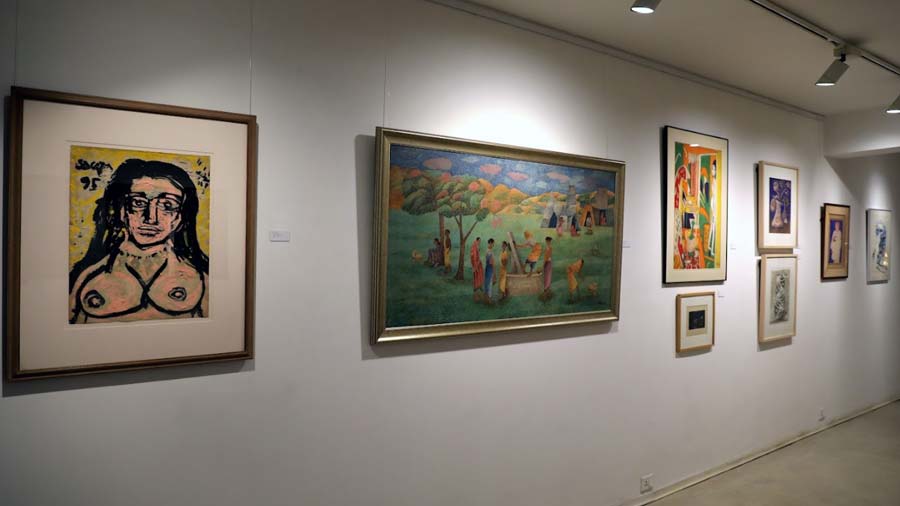
The 1950s and 1960s period was marked by eclectic modernism
Walking through the gallery the viewer will then pass the section on the 1950s and 1960s right to the 1980s, a period marked by eclectic modernism. The first phase of this era is figurative and represented by 14 leading artists of that period, like F.N. Souza, Somnath Hore, N.S. Bendre, K.G. Subramanyan, Arpita Singh and Meera Mukherjee.
Patachitra artist Swarna Chitrakar’s ‘Manasha Mangal’ finds space in this section. “The story of ‘Manasha Mangal’ is a metaphor for the environment, which is relevant even today. And the form she has used even urban artists today wouldn’t dare to do,” said Sarkar. Jaidev Baghel, another ethnic artist from Madhya Pradesh, has also been showcased in this section. “Both of them were exceptional because they were challenging their milieu as it were,” added Sarkar.
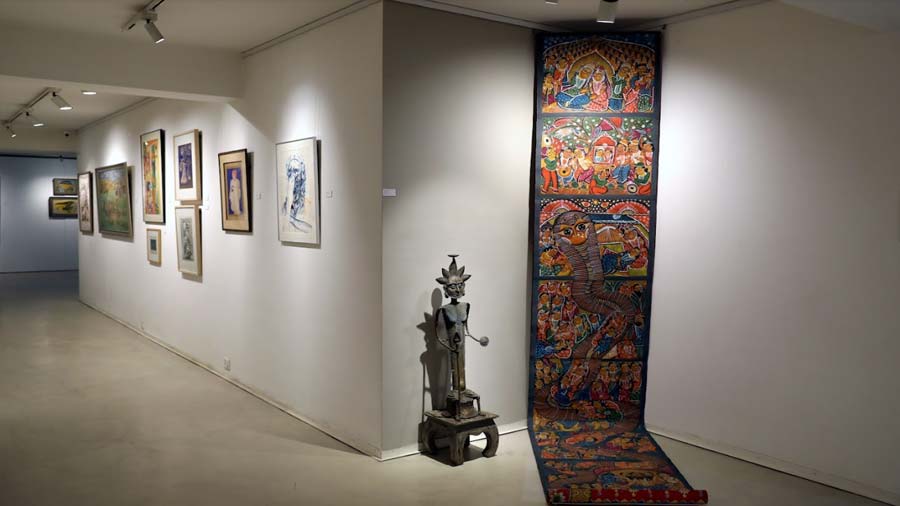
Swarna Chitrakar’s ‘Manasha Mangal’
Language of abstraction and experimenting with ideas
‘Colours of Freedom’ then continues in the second phase of the same period and moves from the figurative to a language of abstraction, highlighted by the works of eight modernists like Sayed Haider Raza and Yusuf. Instead of the more seen or common artworks, the exhibition has selected uncommon works of known artists like Ramkumar and others.
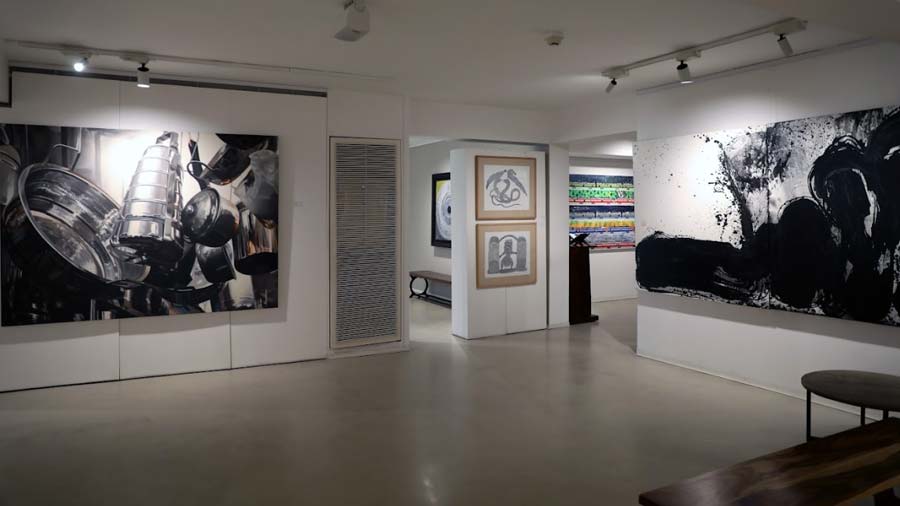
The postmodern period of Indian art
In the postmodern era, the form with which the modernists used to experiment dissolved to give way to experimenting with ideas depicted through artworks by artists like Subodh Gupta, Shreyasi Chatterjee and Shakila. From there the exhibition moves on to the space dominated purely by the millennials which also includes works by CIMA Award winners.
The Gabbar Singh effect
Thrown into this mix are clippings from the film Sholay (1975), which had a huge impact on visual art. “Gabbar Singh caught the imagination of the people and the villain became vital in cinema. The ‘wild, wild, west’ adaptation also changed the way films were imagined,” said Sarkar.
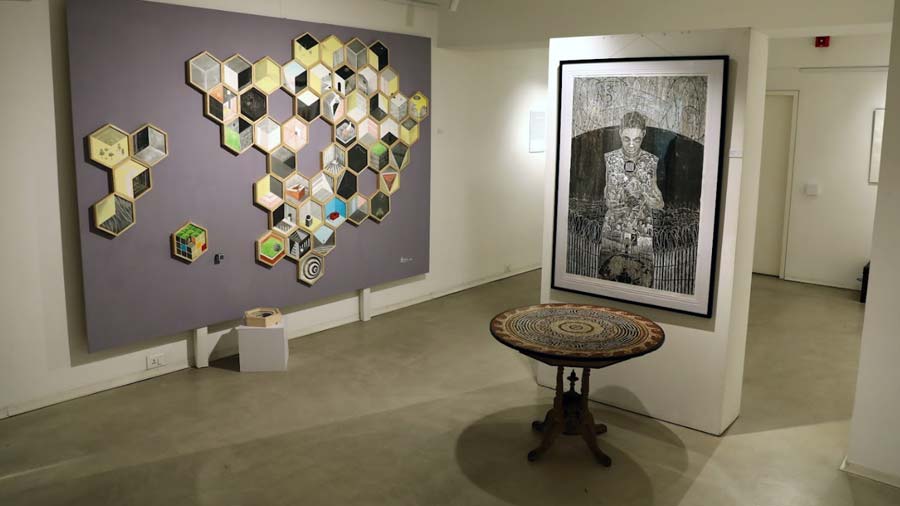
The final section of the exhibition is a space dominated by the millennials
“Indian art has imbibed the essence of various cultures and civilisations and created a fascinating visual vocabulary which is uniquely its own. Colours of Freedom is all about celebrating that wonderful amalgamation of ideas, forms, iconography and colours resulting in a unique and magical experience,” said Sarkar.
Colours of Freedom is on till July 30, 2022; 3pm to 7pm on Mondays and 11am to 7pm from Tuesday to Saturday.
